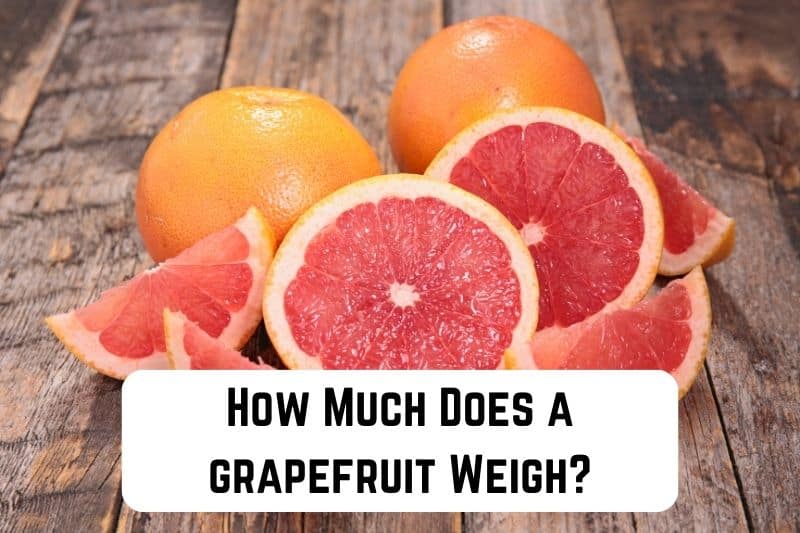Grapefruits are a popular citrus fruit known for their tangy flavor and numerous health benefits. I’ve always enjoyed eating grapefruit and am curious about their weight since they come in different sizes.
If you’re anything like me, you might also be interested in knowing how much a grapefruit weighs.
There are various types of grapefruits, such as Ruby Red, Marsh, and Oro Blanco, each with its unique impact on weight. Choose the perfect grapefruit for your meal confidently, and savor every bite!
Read: How Much Does a Sled Weigh? (Detailed Guide)
The average weight of a grapefruit is usually around 300 to 350 grams (10.6 to 12.3 ounces). Smaller grapefruits weigh around 200 grams (7 ounces) and large ones weigh up to 500 grams (17.6 ounces) or more.
Average Weight of a Grapefruit
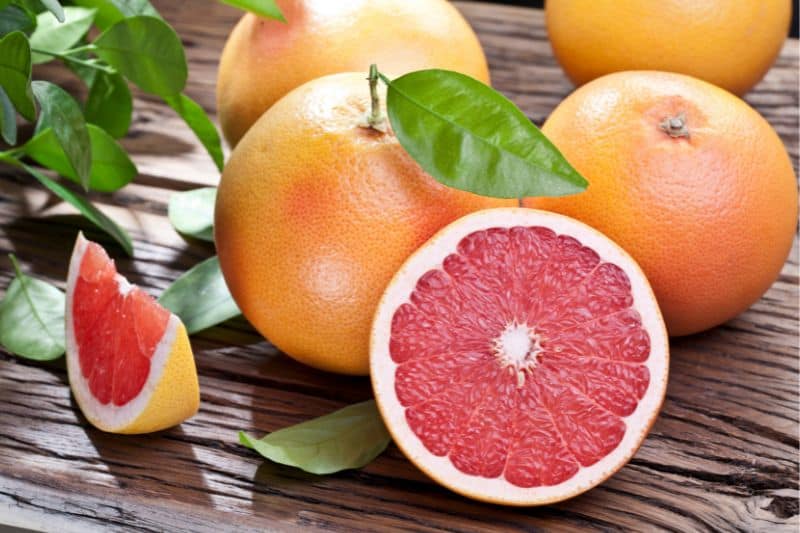
When I think about grapefruits, what comes to my mind is that they’re pretty large, juicy, and nutritious. I’ve often wondered about the average weight of a grapefruit, so I did some research to find out.
Firstly, grapefruits come in different varieties and sizes. Based on my research, I discovered that the most common types of grapefruits are white, pink, and red. The size and weight also vary depending on growing conditions, maturity, and the specific variety.
After looking up numerous sources, I found that the average weight of a grapefruit is usually around 300 to 350 grams (10.6 to 12.3 ounces). However, this doesn’t mean that all grapefruits will weigh the same.
There can be significant variations in individual fruit weights, and it’s possible to find smaller grapefruits weighing around 200 grams (7 ounces) or larger ones weighing up to 500 grams (17.6 ounces) or more.
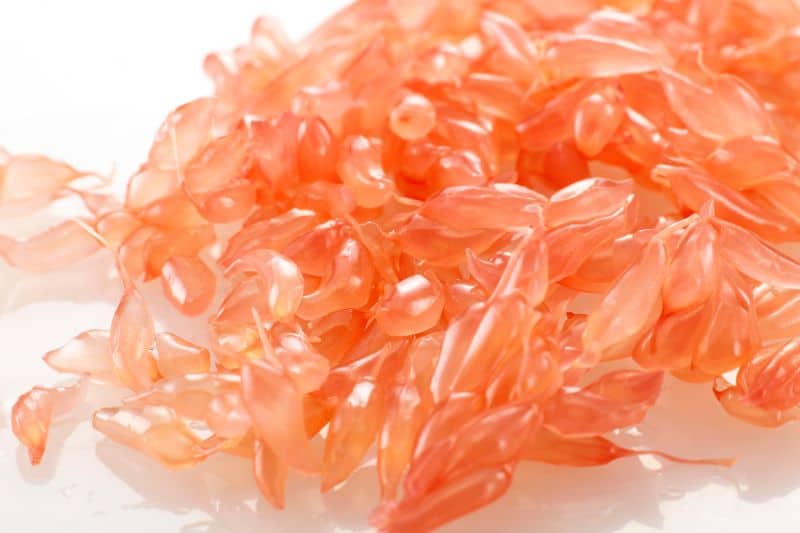
During my research, I also learned that the weight of a grapefruit is not only influenced by its size but also by its density. Grapefruits with thinner skins or less pulp will weigh less than those with thicker skins or more pulp.
Interestingly, the density of a grapefruit can also affect its nutritional content, with denser fruits generally containing higher amounts of vitamins, minerals, and antioxidants.
Factors That Affect Grapefruit Weight
As I’ve learned about grapefruits, I discovered that several factors can affect their weight. Let me share them with you.
First, the variety of the grapefruit influences its size and weight. There are multiple varieties, such as the Ruby Red, Pink, Oro Blanco, and Marsh White.
Each of these has different sizes, with some being smaller and more round while others are larger and more oval. Variety is paramount when determining grapefruit weight.
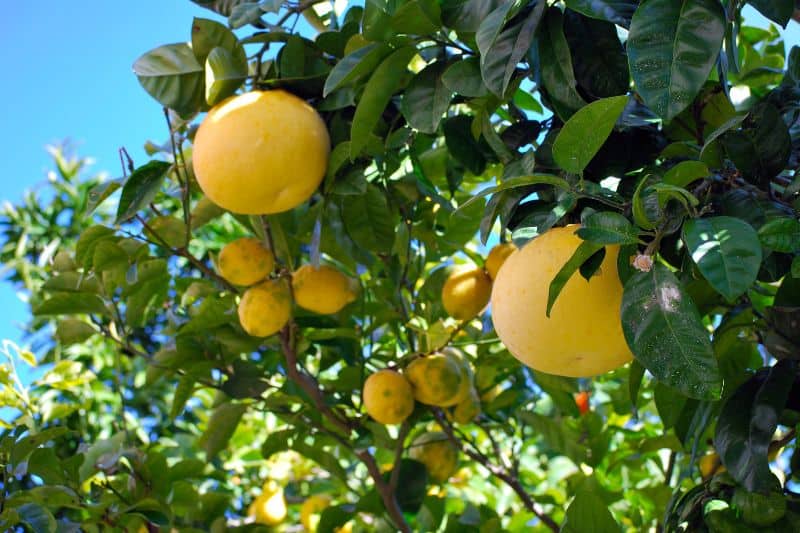
Another factor is the age of the tree on which the grapefruit grows. Younger grapefruit trees produce smaller fruits, whereas older, more established trees can have larger, heavier grapefruits. As the tree matures, it can provide more nutrients to its fruit, resulting in increased weight.
Growing conditions, such as soil quality, access to sunlight, and water availability, also play a critical role in determining grapefruit weight. Adequate resources will yield larger, heavier fruits, while insufficient resources can stunt their growth.
- Soil quality: Rich, fertile soil allows for better nutrient absorption and promotes healthy fruit development.
- Sunlight: Ample sunlight is vital for the photosynthesis process and fruit growth.
- Water: Grapefruits require consistent moisture to grow and develop properly.
Lastly, it’s important to note that the harvest time can have an impact on grapefruit weight as well. Grapefruits picked too early may not have the chance to mature fully and will likely weigh less.
On the other hand, grapefruits left to overripen on the tree can become heavier but with decreased quality.
Grapefruit Varieties and Their Weights
I have noticed that not all grapefruits are the same. There are several varieties of grapefruits, each with its unique characteristics and weight. Let me share some information about these different types of grapefruits and their weights.

Ruby Red Grapefruit is a popular variety known for its deep red color and sweet taste. These grapefruits typically weigh between 300-500 grams. Their peel is thin and reasonably easy to remove, which makes them a favorite among consumers.

White Grapefruit is another common variety that can be found in grocery stores. They are usually slightly larger than Ruby Reds, weighing 400-600 grams. The peel is a bit thicker, and the fruit has a tart, tangy flavor that some people love and others find too strong.

Now, let’s talk about the Star Ruby Grapefruit, a variety with a deep red color and thinner skin than other red grapefruits. Their weight is usually around 300-400 grams, making them one of the smaller varieties. The taste is sweet and delicious, with a hint of bitterness.
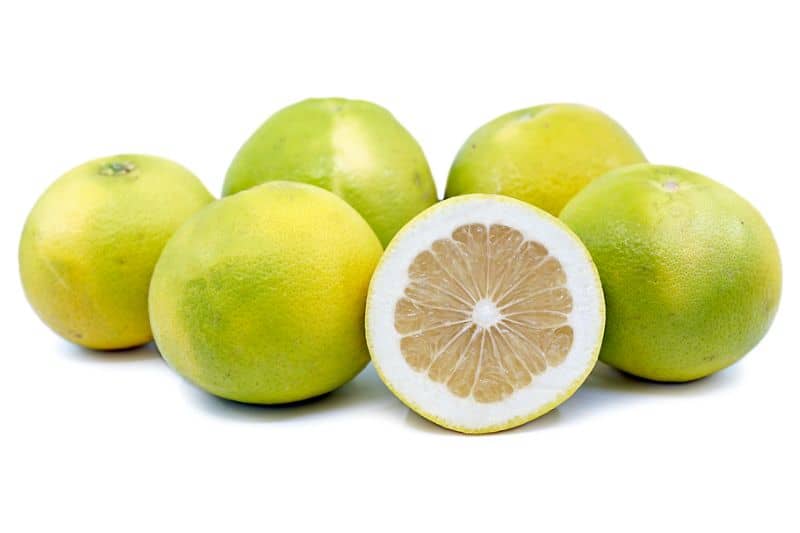
Lastly, the Oro Blanco Grapefruit is a hybrid between a white grapefruit and a pomelo. Oro Blancos are quite large compared to other grapefruits and can weigh around 600-800 grams. They have thick skin, but the inside is sweet and juicy, like a white grapefruit.
Comparative Weights: Grapefruit vs. Other Citrus Fruits
I love exploring the world of citrus fruits, and today, I want to discuss the average weight of grapefruits compared to other citrus fruits. As a fan of all things citrus, I find it interesting how grapefruits stack up against their smaller relatives.

Grapefruit sizes can vary, but they are noticeably larger than most citrus fruits. To give you a better idea, let’s compare them to other familiar citrus fruits:
- Oranges: These popular fruits usually weigh between 100 and 150 grams (3.5 to 5 ounces).
- Lemons: A common lemon typically weighs around 50 to 70 grams (1.75 to 2.5 ounces).
- Limes: Smaller than lemons, limes generally weigh about 30 to 50 grams (1 to 1.75 ounces).
- Tangerines: Often similar in size to oranges, tangerines weigh around 80 to 120 grams (2.8 to 4.25 ounces).
As you can see, grapefruits are pretty hefty compared to these other citrus fruits. Their larger size often means more juice and flesh to enjoy.
One thing to keep in mind is that these are average weights, and individual fruits can vary significantly. Factors like growing conditions, variety, and maturity also play a role in determining a fruit’s weight. So, don’t be surprised if you find a huge orange or a smaller-than-usual grapefruit.
Weight-Based Selection and Consumption of Grapefruit

I always enjoy having a grapefruit as part of my breakfast, and I know that selecting the right one can make all the difference in taste and enjoyment. So, I wanted to share some tips on weight-based selection and consumption of grapefruit that can help you, too.
First, when choosing a grapefruit at the store, I pick one that is heavier for its size, as it usually indicates a higher juice content. To determine this, I compare the weight of grapefruits of similar size in my hand and select the heaviest one.
Read: How Much Does a Parakeet Weigh? (Answered)
Once I’ve chosen my grapefruit based on weight, I also like to consider the shape and texture. A smooth and slightly elongated fruit often means it has thinner skin, which can be easier to peel. Additionally, ensure it doesn’t have any soft spots or blemishes, as it’s a sign of spoilage or poor quality.

If you want to enjoy grapefruit, there are a few different ways to do it! For a simple method, try slicing it in half horizontally and scooping out the juicy segments with a spoon.
If you prefer to peel it like an orange, just be aware that the pith can be bitter. For a snack, try slicing it into wedges. And if you’re feeling thirsty, why not try juicing it for a refreshing and nutritious beverage? The options are endless!
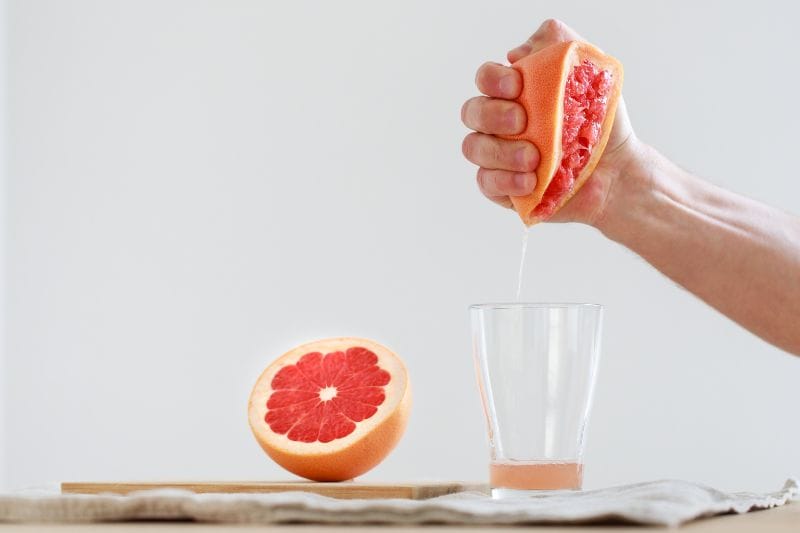
Remember to store your grapefruits properly to prolong their freshness. I usually keep them at room temperature for up to a week, but if you need more time, storing them in the refrigerator’s crisper drawer can help extend their life.
So, next time you’re shopping for grapefruit or enjoying one at home, keep these weight-based selection and consumption insights in mind. Happy grapefruit eating!
Frequently Asked Questions
How many grapefruits equal one pound?
I found that, on average, it takes about two medium-sized grapefruits to equal one pound. However, this can vary depending on the size and variety of the grapefruit.
What is the weight of a peeled grapefruit?
When you peel a grapefruit, you’ll lose about 30-40% of its weight due to the thick skin and pith. So, if you start with a 10-ounce grapefruit, the peeled weight could be around 6-7 ounces.
How much juice can you get from a half grapefruit?
You can get about 1/4 to 1/3 cup of juice from half a grapefruit, depending on the size and juiciness of the fruit. A larger, more ripe grapefruit will yield more juice.
What is the average size of a grapefruit in ounces?
The average size of a grapefruit can range between 8 and 10 ounces. A smaller grapefruit might weigh around 8 ounces, while a larger one could weigh closer to 10 ounces or more.
Is there a difference in weight between small and large grapefruits?
Yes, there is a difference in weight between small and large grapefruits. While small grapefruits usually weigh around 8 ounces, larger ones can weigh up to 10 ounces or more. Remember that the weight can vary depending on the variety and ripeness of the fruit.

